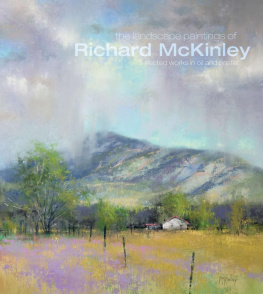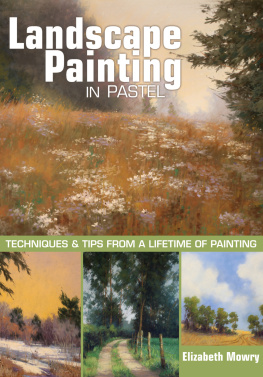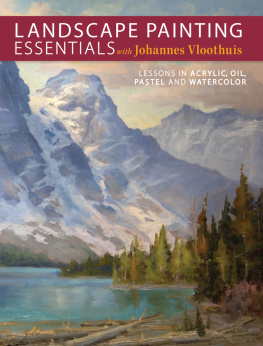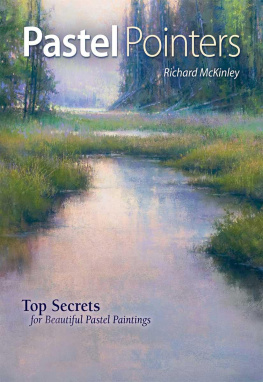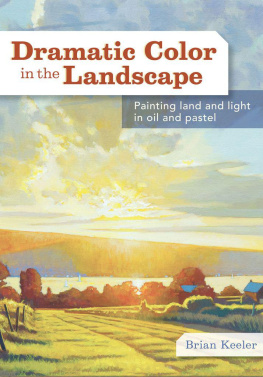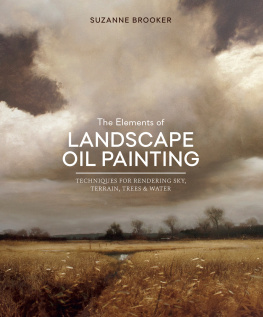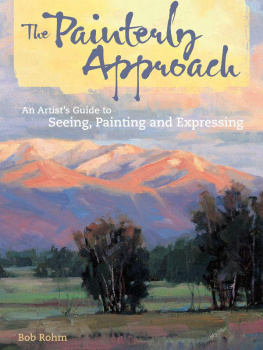Thank you for purchasing this Artist Network eBook.
Sign up for our newsletter and receive special offers, access to free content, and information on the latest new releases and must-have art resources! Plus, receive a coupon code to use on your first purchase from NorthLightShop.com for signing up.
or visit us online to sign up at
http://artistsnetwork.com/ebook-promo
Dedication
This book is dedicated to all of the students I have been so fortunate to interact with over the many years. Far more has been learned by me from you than any other source.
Others have explained the artistic spirit and motivation to create far better than I can. What is important is not perfection, but how much you enjoy the journey. Keep looking ahead and never lose the excitement of the child within that is thrilled with every new artistic adventure. Personally, I will always be a student of the craft of painting and an awestruck observer of the world around me. My goal is to capture in pigment a piece of the spontaneous dance of light across the palette of nature. Even if this eludes me, I plan to enjoy and share the journey along the way. Remember: Painting is a journey, not a destination.
Contents

PART 1
Connection to the Landscape
The landscape is the stage upon which we perform our lives. Certain venues have specific appeal to me, which lead to greater inspiration. The why and what of the allure can be traced to personal experiences and the influence that different seasons and times of day can have upon the landscape. Pastel and oil paint are my mediums of choice, and the artistic tools associated with compositional design are the means for orchestration.

PART 2
The Importance of Working En Plein Air
Having a tactile relationship with the landscape, whether working with pastel or oil paint, is paramount to portraying it well. The insights gained from working en plein air using preparatory outlines, value maps and notan sketches lay the foundation for the economical field sketch or elaborate plein air paintings. Ultimately, any work done on location has a profound effect on landscape paintings done back in the studio.

PART 3
The Role Technique Plays
The manner in which product is applied to surface plays a big part in my painting process. It provides the means for my personality to be expressed beyond the portrayal of subject matter. These techniques are based on experimentation with various methods of underpainting and impasto applications. When combined with universal painting concepts that apply to all representational painting, they form the nucleus of my painting style.

PART 4
Old Friends
Over many years, I have continually revisited certain landscape locations that have become old friends. The familiarity garnered from these frequent visits has allowed for a heightened sense of creative possibility. An intimacy has been formed, and while every visit brings a new experience, the history we share has added to the depth of the exchange. There are four old-friend painting locations that stand out, and together we have grown old and shared many an adventure.
Introduction
I was born in the Rogue River Valley of Oregon and spent my youth growing up with the rivers and mountains that encompass the area. It is from those subjects that my love of the landscape was formed. At a very early age, I was introduced to the importance of painting. My mother was a hobbyist oil painter, and my brother and I knew that whenever the magic paint box came down from the top shelf of the closet that something special was about to happen. She was the one who instilled a sense of artistic wonder in me that still continues.
Since prehistoric times, humans have manifested the desire to express emotion and thought through artistic forms. Often this is done solely for personal enjoyment, but frequently it serves a bigger purpose by communicating personal feelings to other human beings. This desire to be heard, and hopefully understood, has led to the formation of language, the invention of a written alphabet, the arrangement of sound into music and the placement of pigment upon a painting surface.
When our artistic efforts are to be publicly displayed, craftsmanship and technical mastery of the individual medium is required. Otherwise, gibberish and nonsense will be the outcome, resulting in a failure to communicate. Since all of us are the sum total of our experiences and no two of us see and hear things in quite the same way, our artistic expressions will either be cheered or jeered, depending on the audience. This leads most artists to pursue study and practice throughout their artistic lifetime. I was fortunate to have a high school art instructor, James Snook, who saw potential in me and challenged me to use it. I also had the mentorship of professional artist Margaret Stahl-Moyer during my teenage years. As important as this educational focus was, they both reminded me to focus on why, as well as what, I wanted to paint.
Many years ago, I was part of a professional group of artists who, after a long day of en plein air painting, were having a discussion on why we painted. One comment had a profound effect on my own personal perspective. The artist said, One day I realized that no matter if I never sold another painting, never got into another exhibition or never won another prize, I would still paint. It is the day I really started painting. This simple statement pointed out that as much as the physical body requires certain nutrients to survive, so does the human soul.
The Western Renaissance period trend of depicting biblical and social allegory, where humans were always at the forefront, began to change with the advent of Western Industrialization when scientific breakthroughs provided a better understanding of color theory and introduced pigments better suited to representing the sunlit landscape. The British pastoral painter John Constable then influenced a young generation of French artists, who became known as the Barbizon School, to paint the landscape directly from nature. Subsequent generations continued to reflect the personal, cultural and historic influences of their time, bringing us Impressionism, Expressionism and the abstract movement.
No matter with which genre you more closely associate, one thing is clear: We all have to find our inspiration, the driving force behind why we paint. The better understood, the easier it is to develop the skills required to communicate intent, whether our goal is to reflect the way we see the world or to portray the way we wish it to be, how it makes us feel or the way we want others to feel. Knowing why will provide the answers as to what to put in, how to do it and when we are done.

